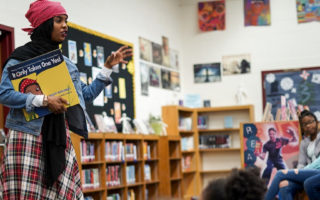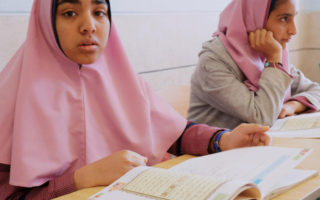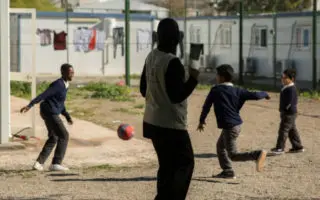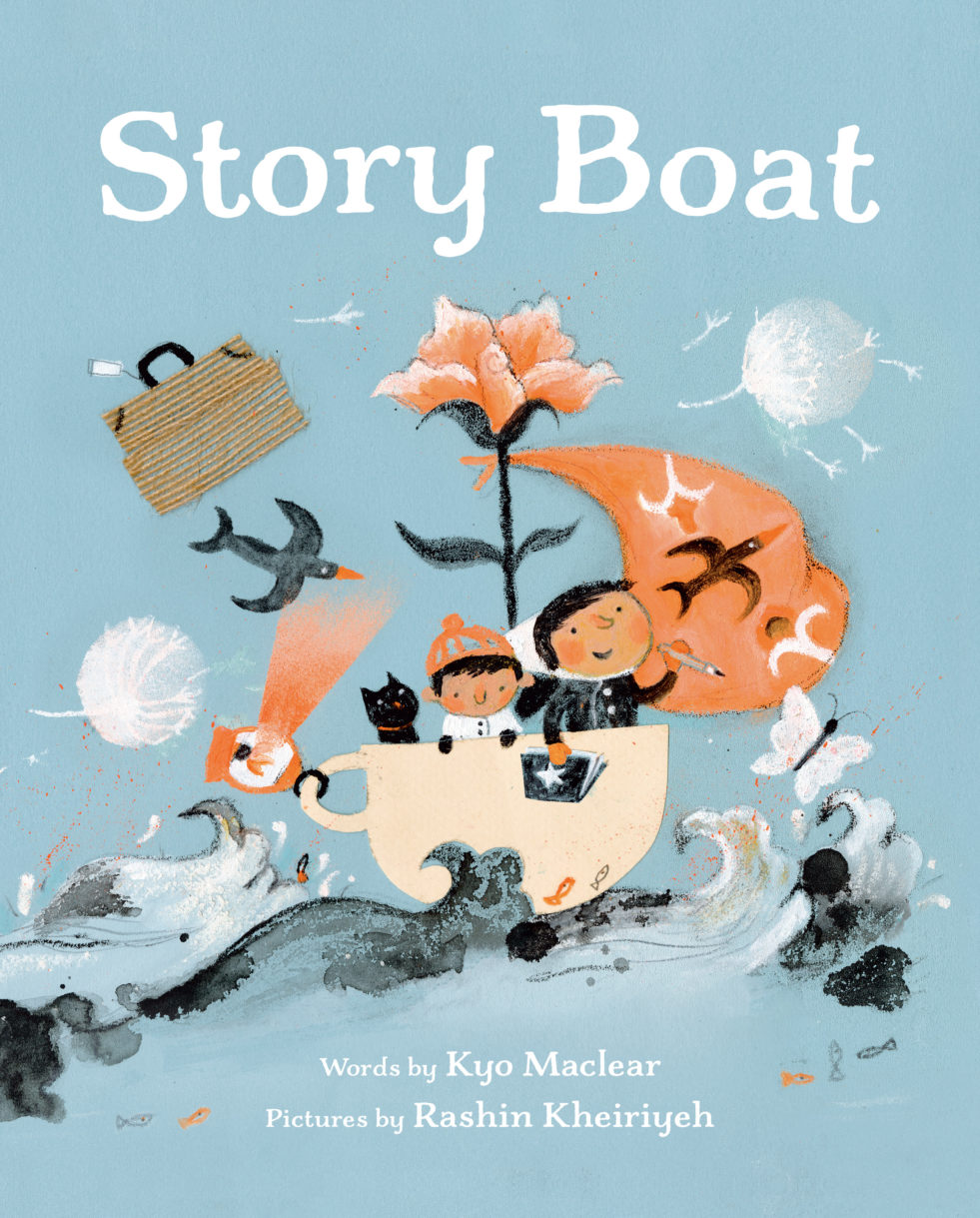
The cover of “Story Boat” or Story Boat by Kyo Maclear and illustrated by Rashin Kheiriyeh is seen in this handout photo. © Penguin Random House Canada
Children’s book engages young readers to reflect on the journey of refugees and the items they hold on to as a source of hope and inspiration.
By Lidia Abraha
In her upcoming book Story Boat, the award-winning Toronto-based author offers a glimpse into the journey refugee children take in search of safety and opportunity. In this picture book illustrated by Rashin Kheiriyeh, a little girl and her younger brother are forced to flee home with their family. While they travel on the road of uncertainty, the characters learn to make a new home with the items they carry. Through this tale, young readers learn how any item—no matter how small—can be a source of hope and inspiration.
Maclear explains why she believes it’s important to include children in conversations about the refugee crisis.
There could be multiple interpretations of what the “boat” symbolizes in the book, especially for refugees who may have travelled to safety by oceans and seas. What does the boat symbolize for you?
For me, the boat was more symbolic. It wasn’t the literal lifeboat that a refugee might take in order to pass from one country to another. It was a boat of stories, it was the idea that we could be carried by something through hard times and the difficult transitions. We can be carried through things like stories, community and our memories. The boat is kind of all of those things. It’s the container that holds us when we’re having a really difficult passage.
“The boat is kind of all of those things. It’s the container that holds us when we’re having a really difficult passage.”
There’s a famous saying by Édouard Glissant that goes, “Our boats are open, and we’ll sail them for everyone.”
I want to think about what a hospitable, inviting, welcoming boat would look like (for refugees) and children are capable of thinking about that at a very early age. Their instinct is to be welcoming. They’re capable of advanced thinking and feeling, and they can help us think this through in a compassionate, honest, no-nonsense, non-self-gratifying way.
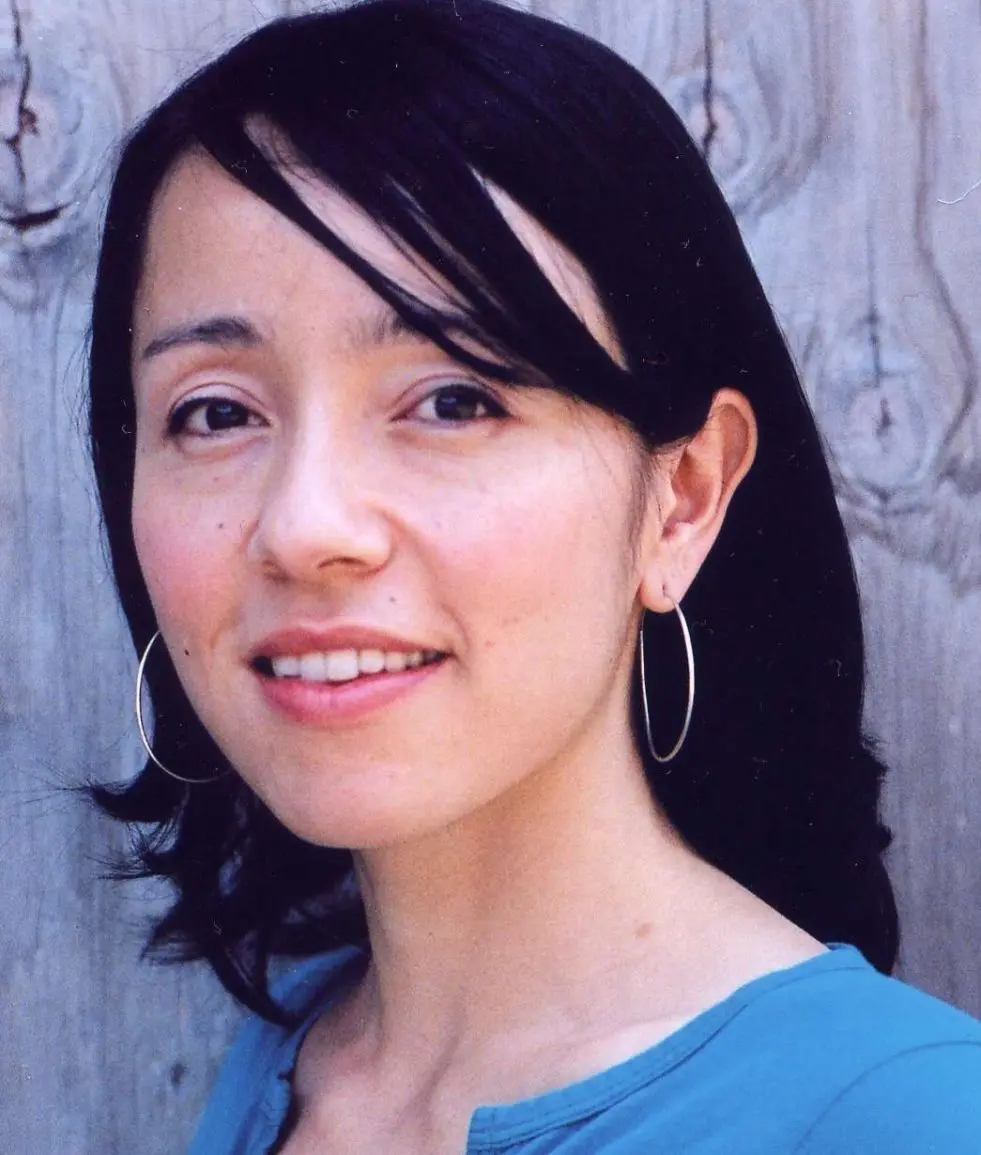
Kyo Maclear is an award-winning Canadian author. Her latest book Story Boat explores the refugee experience. © Penguin Random House Canada
Who was the intended audience for Story Boat?
My intended audience were people who had actually experienced upheaval in some way. That was really important to me—that the experience of the refugee child would be centred in the story. I didn’t want them to feel like a guest to the story, which is the kind of experience of a refugee, where you’re treated as a guest as opposed to a citizen. I wanted refugee children to feel like citizens of this book.
“That was really important to me—that the experience of the refugee child would be centred in the story.”
Can you talk about the educational guide that’s included in the book?
The education guide was meant to amplify some of the ideas in the book. Some of the questions in the guide ask the reader what kind of objects are important to them because most of the story is told around objects. And I wanted the reader to think of when you’re driven from home, what gives you a sense of continuity? When everything is fractured and everything is falling apart, what holds you together? I was thinking, for a child, it would be their family stories, their family memories, and maybe some objects they carry with them or that they encounter.
So, some of the questions are really focused on those things, and from a child’s point of view. [The guide] is really meant to encompass children who have come from refugee experiences, but also children who are on the outside of that experience.
Could you talk about the items that were inspired by UNHCR?
I did a little bit of research about the objects that would exist within a refugee context. I wanted to choose objects that would be meaningful within that context, but also outside of that context. For example, a blanket, a lamp, a cup, all of those things that a child might encounter in that focused context, but they would also come across in any home, really. There’s a line about the solar power lamp in the book, and that’s referencing the UNHCR solar lamps. I wanted that reference to be in there for anybody who was aware, and would recognize that, but also for it to be universal.
“It’s our story. That’s the fundamental flaw in a lot of our conversations about the refugee situation: it’s seen as someone else’s story.”
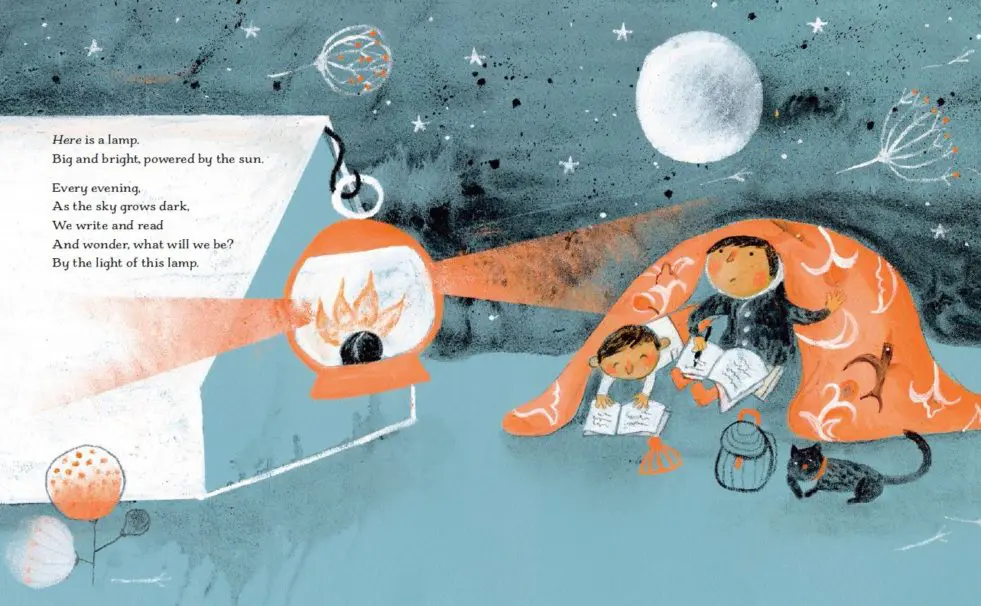
The solar lanterns UNHCR provides to refugees inspired the lanterns depicted in Kyo Maclear’s Story Boat. © Penguin Random House Canada
Why is it important for children to hear stories about refugees?
Well, it’s our story. That’s the fundamental flaw in a lot of our conversations about the refugee situation: it’s seen as someone else’s story. A refugee or immigrant is often asked: “What is your story?” And I think there’s a way in which that really is disingenuous because we’re so interconnected. What happens in one country now will determine who is displaced tomorrow. So it’s important for all of us to have this conversation because we all play a part in the outcome.
*Note: This interview has been edited and condensed.



